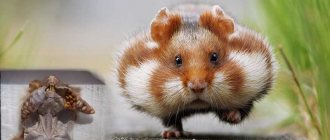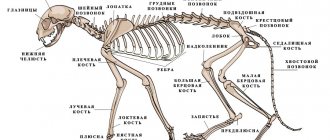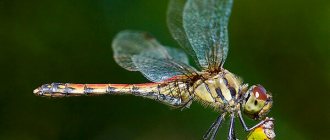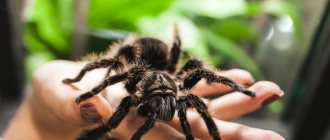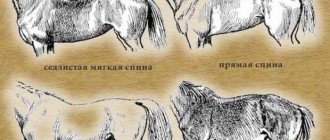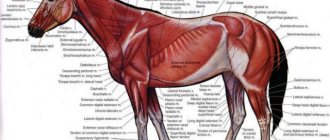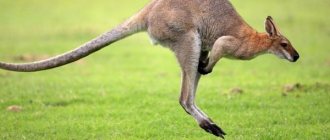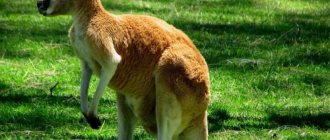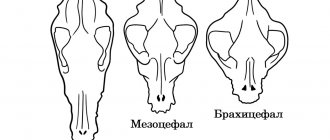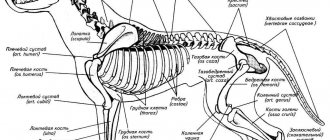You can easily find out what different types of wasps look like from biology textbooks and in other information publications, including on the Internet. Everyone knows the common wasp, because it differs from other insects in its yellow-black striped color, the presence of small mustaches and transparent wings. The common wasp often settles next to a person, on a personal plot or summer cottage. To do this, a colony of wasps builds their nests either in the ground, or in trees, or in the attics of outbuildings, etc. In fact, in nature there are many species of wasps that differ from each other both in body shape and in the characteristics of their life.
Origin of the species and description
Photo: Osa
Wasps do not have a clear scientific definition. This is the customary name for all stinging stalked-bellied insects from the order Hymenoptera, which do not belong to bees or ants. Today there is a huge variety of different wasps. Insects of this type include the following wasps: road wasps, glitter wasps, sand wasps, skolia wasps, paper wasps, flower wasps, hornets, burrowing wasps, and many others.
All of them are conventionally divided into two categories:
- Singles;
- Public.
Interesting fact: Unlike bees, wasps can defend themselves not only with the help of a sting. If their existence is threatened, insects can use the jaw apparatus. Their bite is quite sensitive.
The solitary wasp leads a solitary life and builds an unusual nest. All adults are capable of reproduction. If nests are built, then in very secluded corners: on walls, on a tree, in the soil. And only a small number of species prefer to live without nests. They rest in natural holes in the wood.
Social wasps prefer to live in families. Their nests are built by the queen. Not all adults are capable of reproduction. Sometimes a colony can number several thousand wasps, but only one of them can reproduce. Infertile wasps are called workers, fertile ones are called queens.
Interesting fact: Most Hymenoptera can transition from a solitary to a social lifestyle. This transition takes place in several stages.
Anatomy of a bee
The internal structure of the bee's body also has a number of its own developmental features. Let's look at some of them.
The insect has a goiter - an unusual organ that performs the function of carrying and processing collected nectar into honey. The crop can stretch and accommodate up to 90 ml of nectar. It is worth noting that the total weight of the bee is only 110 mg. True, the goiter is filled, as a rule, by no more than half. The goiter is located between the mouth and stomach. It is separated from the stomach by a special valve.
Another distinctive feature of the internal structure of a bee is the presence of special rectal glands, which are located at the base of the rectum. In winter, insects do not excrete excrement, so they accumulate in the rectum. The rectal glands secrete an antiseptic enzyme to avoid unwanted processes.
Appearance and features
Photo: Insect wasp
The wasp is a bright, interesting insect. It has a very characteristic color - yellow and black stripes. The adult size is average - up to ten centimeters. Only females can reach eighteen centimeters in length. The body of this animal has many small hairs. There is a sting at its end. It is short, very smooth, and easily penetrates the victim. The sting has the ability to move, so the wasp can bite from almost any position.
Video: Wasp
The wasp has eyes of a complex structure. They are large and can distinguish objects at 180C. Three eyes are located on the top of the head. They are difficult to notice right away. Near these eyes there are antennae. The functions of the antennae depend on the activity of the animal and the specific situation. Usually this part of the body serves as a reference point for flight. With their help, the wasp can accurately determine the direction of the wind, the depth of the gap and much more.
Interesting fact: The sting of representatives of the wasp species does not have serrations. Unlike bees, these animals are not injured when stung.
Wasps is a collective name. There are many types of wasps, and their external characteristics vary slightly.
Let's look at a brief external description of the most common types:
- Paper. They look the most familiar. They settle near humans and are black and yellow in color;
- Spangled wasps. They have average sizes - up to eight centimeters. The color of the body is unusual - pearlescent, pink or turquoise;
- Floral. They are tiny in size. They do not grow more than one centimeter. The predominant color is yellow;
- German wasps. They have an unusual body color – bright orange. Males of this species are black and orange and have black wings. Females do not have wings and are often called velvet ants.
Home improvement
In social insects, the uterus is the first to begin organizing housing. She creates a small-sized dwelling, sufficient for laying eggs. Over time, the insect nest grows tier by tier. The queen works until the workers grow up, and they will continue construction. The more worker wasps in the nest, the larger its size.
The queen is considered the main one in the aspen family.
At this time, the uterus is engaged in the main task of its life - laying eggs. At the same time, she keeps order in the colony, urging on the careless with bites. In the summer, working individuals develop from the laid eggs; closer to autumn, females and males develop. Growing up, they leave their native nest. Males die after mating, and females hide in secluded places for the winter and fall into torpor. When warm days arrive, they come out of their hiding places and begin to build new colonies.
Interesting video: Wasps and hornets, life cycle
Where does the wasp live?
Photo: Animal wasp
Representatives of wasps are widespread throughout the world. They can easily be found in Belarus, Russia, Ukraine, Europe, Africa, Argentina, Canada, Mexico, Australia, China, Japan. Such animals do not live only in the hot Sahara, the Arctic and the Arabian Peninsula. Wasps prefer a temperate climate and cannot exist in regions that are too hot or too frosty.
Interesting fact: A very dangerous species of wasp lives in Japan and China - the Asian hornet. Its size can reach six centimeters. One bite of such an insect is quite enough to kill a person, especially if he is allergic. According to statistics, up to fifty people die every year from the sting of the Asian hornet in these countries.
Most representatives of wasps live in the Northern Hemisphere. Only a small population can be found in Brazil. These insects choose their habitat according to several criteria: temperate climate, presence of trees, humans. The thing is that the human habitat makes it easier for wasps to get their food. The tree is used for building nests and raising larvae. Some individuals build homes from clay and pebbles. Their nests look very much like small castles.
What does a wasp eat?
Photo: Osa
The diet of representatives of the wasp species is quite varied. It depends on several factors: type of animal, stage of development, habitat. It may seem that these insects are not at all selective in food. They can eat sweets, fish, fruit, berries and even candy. However, this is not the main food of wasps, but only a pleasant addition to the diet.
Most species prefer soft, liquid food. They feed on the pulp of a variety of fruits, plant juice, berries and nectars. If the opportunity arises, the wasp will not mind eating a little jam, honey or sweet drink. Wasps have a very developed sense of smell. Therefore, they can easily find fermented or rotten fruits. They are also attracted by the pungent smell of beer and kvass. Wasps bring part of their prey to their offspring, the queen. This is what the workers do.
Predator wasps have a slightly different diet. They mainly eat insects: beetles, flies, cockroaches, small spiders. This is what they feed their offspring. The hunting process of a predator wasp is quite interesting. First she looks out for a potential victim, then suddenly attacks. The hymenoptera insect tries to insert its sting into its prey as quickly as possible in order to paralyze it. The poison helps keep the meat fresh.
Wasp self-defense
After a wasp sting, a person's skin swells.
To protect themselves, these insects use 2 methods. A passive defense is their bright colors, which repel lizards, birds and other small mammals. Enemies associate this color with unpleasant taste sensations, so after several attempts, they stop hunting wasps. And the second method of protection is active - the use of a sting. The sting is a curved tube without barbs, so when the wasp plunges its weapon under the skin of the enemy and injects poison, it does not die like a bee, but calmly removes the sting and can attack again.
Features of character and lifestyle
Photo: Bumblebee Wasp
The lifestyle of this animal depends on the species. The life of solitary wasps can be called monotonous. They are actively engaged in preparing reserves for offspring. To do this, they place the paralyzed prey in the nest so that the larvae can feed on it. Further, the offspring will develop independently, without the help of their parents.
Social wasps live more interesting lives. In the spring, the queen looks for a place to create a “house”. There she lays eggs. When the larvae appear, the queen takes care of them. The first brood grows up over time and relieves its parent of worries. They take on all the responsibilities for obtaining food and building a house. The queen continues to increase the number of colonies.
There is an opinion that stinging insects spend the night sleeping. But that's not true! These animals never sleep. With the onset of darkness, their natural activity simply decreases. Wasps prefer to spend their nights in their nests, chewing bark. When morning comes, the adults begin building new honeycombs.
Interesting fact: The lifespan of males usually does not exceed two weeks. Male wasps die soon after mating.
The character of most representatives of this species is very bad. Wasps are not the first to attack without doing anything, but they will definitely sting if you disturb them even a little. In this case, the smell of the secreted poison can be smelled by relatives of the insect. Then the person or animal who disturbed the wasp will be in big trouble. Wasps can band together and face danger together.
Body structure
A characteristic feature of insects belonging to the suborder stalked-bellied is the presence of a narrow stalk between the thorax and abdomen. Wasps have two pairs of membranous wings, the body consists of a head, chest and abdomen. A distinctive feature of stinging insects is a transformed ovipositor. It is transformed into a smooth sting connected to poisonous glands. Wasps use venom as a defense against enemies, and also paralyze caterpillars and spiders caught to feed the larvae.
Compound eyes are located on the sides of the head. The antennae of insects serve as organs of smell and touch. The jaws are developed; they serve to tear apart insects and gnawing bark from branches. Hymenoptera have two pairs of wings that function as one unit in flight. Representatives of the Foldoptera family have wings folded longitudinally and in half. The legs consist of five segments and there are movable spurs. The abdomen consists of several segments; the presence of a stalk makes it mobile. Individuals of different sexes differ in size, structure of legs, wings and other organs. The division of responsibilities in most social wasps is weakly expressed. Their uterus is larger in size. The larvae lead a sedentary lifestyle and require meat food and care.
Types of wasps
Social structure and reproduction
Photo: Insect wasp
In winter, adults are constantly in shelter. To do this, they find a secluded place for themselves in advance. With the onset of spring, with the first warmth, the queen flies out in search of a suitable place to build a nest. The nest is necessary so that the female can lay eggs there and raise her offspring. Tree bark, clay, stones and other natural materials are used for construction.
The first eggs hatch into sterile individuals. They will continue to build a home and bring food for the queen's future offspring. Only at the end of summer do offspring appear that are capable of reproducing their own kind. It is this that will mate in the future. After fertilization, the females will look for a place for a warm winter, and the males will soon die a natural death.
One female wasp can reproduce about two thousand individuals. Most of them will be infertile. The uterus seals the laid eggs in a special chamber. She also places small insects there. The larvae will feed on these insects in the future and soon turn into adults. The larvae, which will be able to reproduce in the future, have a completely different diet. They are fed food that promotes the development of sexual organs. The queen lives for about ten months, while sterile wasps only live for four weeks.
Nutrition
Wasps are predatory insects, although they are known to have a “sweet tooth.” You should not leave bowls of jam on the summer veranda after drinking tea; wasps will certainly discover this gift and fly here for a new portion. Wasps can lick nectar from flowers, or they can also snack on smaller insects.
And yet, one has only to remember the wasp-rider, and doubts about predation will disappear. This wasp looks for a well-fed caterpillar, sits astride it (like an equestrian), pierces the skin with its ovipositor and lays eggs in the body of the victim.
Later, the larvae will be provided with food, that is, this very caterpillar. Some wasps choose beetles instead of caterpillars. The Pepsis wasp (road wasp) even tracks spiders, attacking them, sometimes even in their own home, and lays its eggs in the body of this spider.
By the way, cicadas, which are larger than wasps, also feed the larvae. They are simply walled up in a cell with an egg and when the larva hatches, it will not starve.
Natural enemies of wasps
Photo: Wasp animal
Wasps, especially social species, are collective animals. Together they can hold the defense when attacked by the enemy.
However, even wasp colonies have natural enemies:
- Some types of birds. Only certain species of birds dare to attack stinging insects. In particular, European honey buzzards prey on wasps. They catch them in flight and immediately tear off the sting. The carcass is then given to its chicks. Bee-eaters are not averse to eating wasps. They easily catch them, crush them and quickly swallow them. At the same time, they themselves never receive any damage;
- Small parasites. They start right in wasp nests. Small ticks, “riders”, feed on young animals that still live in the honeycombs. Such parasites can go unnoticed by adults for a very long time. They significantly reduce the number of young animals;
- Wild animals. Wasps need to be wary of hedgehogs, bears, and other medium and large wild predators. However, most animals that have been bitten by this insect at least once try to avoid it in the future;
- People. If a wasp colony settles near a house, in a barn or in an attic, it will almost always die. People, on their own or with the help of specialists, try to get rid of the nest and wasps using various means and poison.
Population and species status
Photo: Osa
Wasps are a necessary, useful and significant part of the fauna. Yes, they do not produce tasty honey like bees and even harm beekeeping. However, in other areas of life and in nature, they perform a very useful task - they destroy various pests. They catch small insects and feed them to their offspring. This has a beneficial effect on plants. Garden and vegetable plantings do not suffer from the paws of pests.
For example, wasps can help completely get rid of a pest such as a mole cricket. If there is a mole cricket in the area, it is enough to attract wasps with the help of flower plants. Ground wasps will very quickly “restore order” to the area. Wasps can also be used to combat borers and leaf beetles. The following species feed on these pests: wall, paper, big-headed, big-nosed. They can significantly reduce the number of harmful insects. This is the best way to combat them without using chemicals.
Representatives of the wasp species are numerous. They are common in many countries, multiply quickly, and are able to protect themselves. Therefore, the species is not threatened by the process of extinction or extinction. However, it is impossible to track the wasp population with great accuracy. These are small insects that often settle in hard-to-reach places. For this reason, accurate population data does not exist.
Why do insects buzz?
Almost all insects make a slightly annoying buzzing sound when flying. Although there are insects that can fly absolutely silently, for example, butterflies. But why are the bees buzzing then?
This is due to the fact that the size of the wings, their number and flapping speed simply do not allow the sound to be reduced during flight. It turns out that only those insects that do not flap their wings so often and whose wings are larger than the body itself . Bees have small wings, so the speed of their flapping must be enormous. This is how the buzzing sound is created when flying.
Using the power of buzzing, individuals communicate with each other. In this way, insects are able to exchange information. It looks incredibly mesmerizing. However, most often such communication in insects is nothing more than a warning of impending danger .
